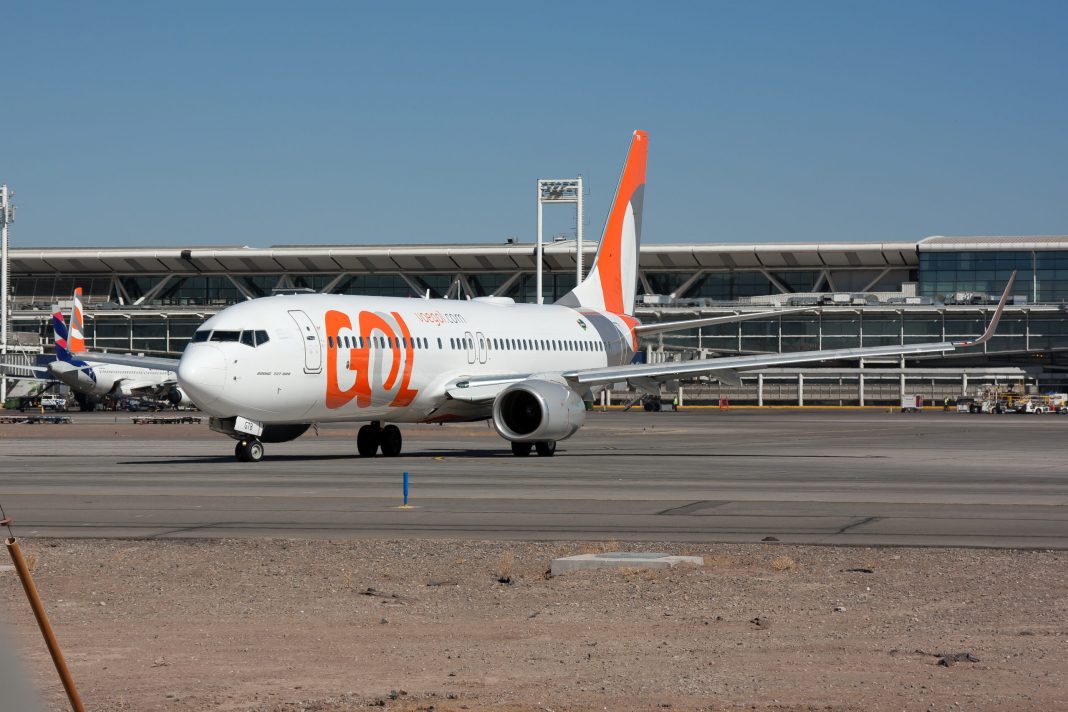Earlier this week, a GOL Linhas Aéreas Boeing 737 had to return to its departure airport shortly after takeoff. It had been operating a Brazilian domestic flight between Recife (REC) and São Paulo–Congonhas (CGH). The reason for the diversion is said to have been an electrical problem. But how exactly did the incident play out?

The flight in question
Flight G31705 is a scheduled domestic flight operated by Rio de Janeiro-based Brazilian low-cost carrier GOL. The airline’s name is derived from the Brazilian Portuguese word for “goal,” reflecting the country’s love of football. At 37.7%, it had a market share of over a third for the Brazilian domestic market in 2019.
One such route in GOL’s domestic network connects the north-eastern city of Recife with São Paulo, in the south of the country. Flights to and from Recife serve São Paulo’s two-largest airports, with competition provided by Azul. These are the larger and more internationally-focused Guarulhos, and the smaller Congonhas, which acts as the city’s regional hub. These have respectively been Brazil’s busiest and second-busiest airports by passenger numbers since 2016.

Flight G31705 operates daily, and previously had a scheduled flight time of three hours and 15 minutes. Its scheduled departure was at 17:25 local time, with an evening arrival at 20:40. As of December 18th, FlightRadar24.com reports that its departure time has been rescheduled to 17:50. However, with a reduced scheduled flight time of three hours, the flight arrives just 10 minutes later than previously, at 20:50.
Stay informed: Sign up for our daily aviation news digest.
What happened?
On December 18th, this particular flight had departed nearly three hours late, at 20:39 local time. According to The Aviation Herald, passengers had boarded the flight, before being asked to deboard, before boarding again later ahead of the delayed departure. However, the disruption was to continue even after departure.

Having departed Recife, the flight had reached its cruising altitude of 38,000 feet and was flying on a southwesterly bearing. However, after just over 20 minutes, when the aircraft was 160 NM (295 km) south of Recife, its crew reported an electrical issue. Specifically, a technical failure had caused the plane to be down to just one electrical source.
As such, the crew informed the passengers of the technical failure, and elected to return to their departure airport. Following the diversion, the flight made a safe landing just after half-past nine on Recife’s runway 18 after around an hour in the air.
The aircraft involved
The aircraft that operated flight G31705 on December 18th was a Boeing 737-700 bearing the registration PR-GOW. According to Planespotters.net, this particular plane is 22 years old. Varig originally took delivery of the aircraft in December 1998, when it bore the registration PP-VQD. GOL then obtained the aircraft in 2003, and it has remained with the airline ever since. FlightRadar24.com reports that PR-GOW was able to position to São Paulo on December 19th, returning to full active commercial service later that day with a domestic flight to Porto Alegre.

PR-GOW is one of the 125 Boeing 737 aircraft that currently make up GOL’s fleet, according to Planespotters.net. These are broken down as follows:
- 737-700 – 22 examples (16 in service, 6 parked).
- 737-800 – 96 examples (87 in service, 9 parked).
- 737 MAX 8 – 7 examples (6 in service, 1 parked).
The latter of these has recently become particularly significant for the airline. Indeed, on December 9th, GOL operated the first post-recertification commercial 737 MAX flight between São Paulo Guarulhos and Porto Alegre. The type has since operated further Brazilian domestic routes, serving cities such as Rio de Janeiro, Belo Horizonte, Curitiba, and Florianopolis.
What do you make of this incident? Have you flown with GOL before? Let us know your thoughts and experiences in the comments.
[ad_2]
Source link


